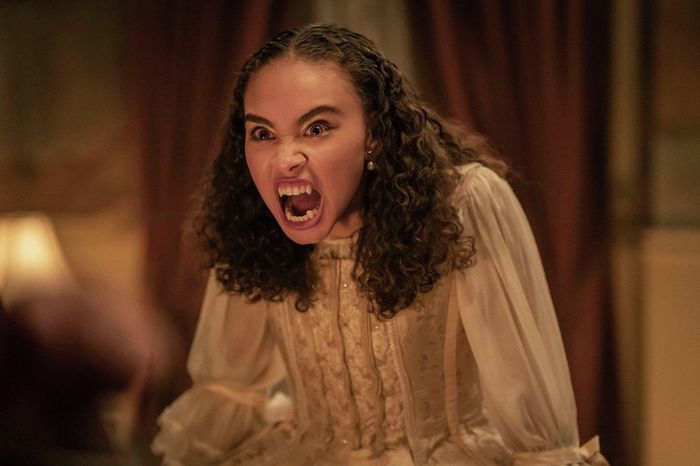The real folklore behind your favourite horror films
In Halloween week, Ismail Sheikh explores the historic folklore behind some of the most iconic horror films

The real-life folklore behind some of these iconic horror stories is rooted in culture that is centuries old. These three examples demonstrate that filmmakers use a wide range of source material to craft an unforgettable spooky story.
The Witch, Robert Eggers (2015)
A film set around 1630, The Witch presents us with a Puritan family plagued by dark forces. The film immerses you into the horrors of 17th century England, deeply unsettling you until its shocking and haunting ending. Robert Eggers actually consulted historical documents and religious texts of Puritan beliefs when researching for the film, including letters and journals of 17th century settlers, giving an eerie peak into the real paranoia of those with such intense Puritan beliefs and deep fear of witchcraft. Black Phillip, the goat, represented the belief at the time of animals embodying the devil. The belief that the devil would take animal form to torment the faithful was reflected in that he was Satan’s presence in the movie, as the family believed that they are being plagued by the devil. They attribute their misfortunes to a satanic presence as many did of Puritan belief — crops failing, the baby disappearing, and other strange behaviours are all explained away by the devil, leading the family to come up with accusations of witchcraft…
The Puritans of the time saw the wilderness as a wild, unkempt mystery for evil to thrive, with unknown forces prospering under God’s weakened control in the darkness. The family’s isolation in the woods builds upon this fear, as the Witch lives in the foreboding, claustrophobic gloom of the forest.
“The belief at the time that the devil would take animal form to torment the faithful was reflected in that he was Satan’s presence in the movie”
Midsommar, Ari Aster (2019)
The horror film that featured bright sunshine and beautiful Swedish scenery was originally pitched to the director as a “slasher set in Sweden”, but ended up as a deeply insightful look into a cultish folk horror film. As Aster says, the aforementioned folklore was the perfect disguise for his “break up film”, resulting in his “Wizard of Oz for perverts”. Despite the flattering words from the director, the film is considered one of the most polarising films of that year, leading to a cult following for the modern horror classic.
The film’s commune celebrates the midsummer festival with an array of rituals — some charming, others deeply unsettling. In reality, Swedish Midsummer festivals often include beautiful displays of flowers and joyous maypole dances — aspects the film included juxtaposed with rituals like the terrifying cliffside ättestupa (ritualistic suicide of the elderly). In contrasting the beautify with the horror, Aster amplifies the more mysterious, ancient elements of the celebration, highlighting a pagan connection to nature and death. The ättestupa legend comes from Nordic folklore, where it was said that in old age, a person would throw themselves off a cliff or be pushed off to die with dignity. One of the most shocking parts of the film is not the graphic violence but more-so the serenity and acceptance we witness from all those who reach the age of 72 and peacefully walk off the cliff. There’s little historical evidence that this was actually practised, but the myth persisted for centuries as a symbol of sacrifice and death in old age.
“The timeless trope of a haunted forest, especially when combined with the evil forces of a witch, are deeply rooted in American colonial folklore”
Blair Witch Project, Eduardo Sánchez/Daniel Myrick (1999)
While the Blair Witch was not a real icon of folklore, the way the film masterfully utilised tropes, alongside its guerrilla marketing meant that audiences became convinced of the reality of the situation at an alarming rate. The timeless trope of a haunted forest, especially when combined with the evil forces of a witch, are deeply rooted in American colonial folklore, which was inspired by European superstitions about witchcraft, especially in the rural, isolated, and heavily forested regions like Maryland, where Burkittsville is. Early settlers in the US were influenced by these tales of witches and the fears brought by an untamed nature, where the devil and his witch agents could thrive in isolation.
The film treated the Blair Witch as a real threat, with the interviews and stories throughout the film portraying how urban legends cement themselves into small communities. The film showed the power of oral tradition, and it was this blurred line between reality and fiction that led audiences to really believe these three filmmakers had suffered at the hands of the witch.
 News / SU reluctantly registers controversial women’s soc18 December 2025
News / SU reluctantly registers controversial women’s soc18 December 2025 News / CUP announces funding scheme for under-represented academics19 December 2025
News / CUP announces funding scheme for under-represented academics19 December 2025 Features / Should I stay or should I go? Cambridge students and alumni reflect on how their memories stay with them15 December 2025
Features / Should I stay or should I go? Cambridge students and alumni reflect on how their memories stay with them15 December 2025 Fashion / The art of the formal outfit 18 December 2025
Fashion / The art of the formal outfit 18 December 2025 News / Dons warn PM about Vet School closure16 December 2025
News / Dons warn PM about Vet School closure16 December 2025










